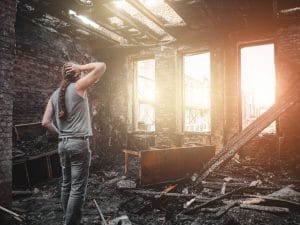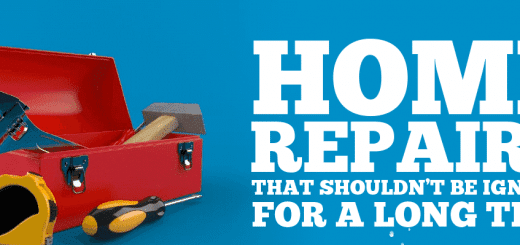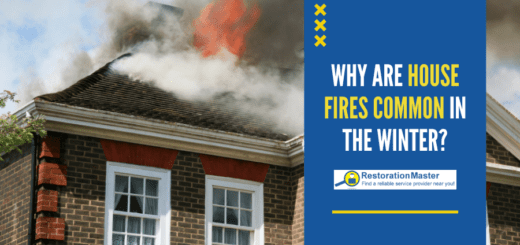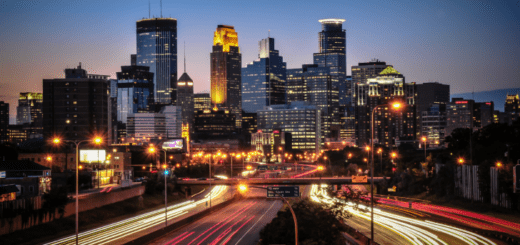Recovering from Fire Damage: What To Do After A Fire Disaster
Nobody is ever truly prepared for a house fire. It can start from anywhere in your home, at any given time of the day, and for a number of reasons.
A fire disaster is one of the worst tragedies that can happen to anyone. The experience can be traumatizing, and it can leave you feeling helpless. Fire victims are often at a loss on what to do next. And it’s not because of shock or overwhelming emotions.
While we genuinely hope that you never find yourself dealing with fire damage, you need to prepare for it. Accidents and misfortune strike without warning. It is best to be ready for them.
Here are some valuable tips on how to deal with the aftermath and begin the fire damage restorationFire damage restoration is the process of repairing and rest... More process on your home.
1. Get in touch with your insurance agent as soon as possible.

One of the first phone calls you need to consider making after a fire disaster should be to your insurance provider.
One of the first phone calls you need to make should be to your insurance provider. Before you start planning ways on how to deal with the damage, inform your agent of the incidentAn incident is an event or occurrence that causes damage, di... More so you can go over the details of your insurance coverage.
Be sure to confirm if there are any inclusions in your policy that you may have missed or overlooked – like a living allowance or temporary accommodation assistance, perhaps. You also have to discuss the claims process and what you can do to speed things up.
Most importantly, don’t forget to advise the agent of your immediate fire damage remediation plans. Wait for the insurance company’s go signal before taking any action.
2. Ask for a copy of the fire report.
A fire report contains the critical details surrounding and contributing to the fire incidentAn incident is an event or occurrence that causes damage, di... More. It also includes basic information such as the date and time, the location, an account of the damage, and the source of the fire (if known). All this data is essential to your insurance claim.
Fire reports are public documents, so you shouldn’t have any problem requesting a copy.
3. Start the mitigation process.
Fire can continue to endanger lives and cause damage to property even after it has been put out. Weakened structures can cave in, and damaged pipes can burst. There’s also the risk of inhaling toxic chemicals from the smoke residueSmoke residue is the fine, oily, or powdery particles left b... More and complex mix of gasses released into the air.
It’s important to start fire damage mitigation as soon as possible, but this is not something that you should do on your own. Let a local fire damage mitigation company take care of that for you.
4. Keep a record of all the damaged items.
Homeowners insurance usually includes contents coverage, which means your policy will also cover the replacement cost of items destroyed in the fire. Insurers typically ask for an inventory of personal properties damaged during the fire. To ensure that everything is accounted for, create a register of your belongings, and document your losses.
As you secure and mitigateTo mitigate is to reduce or limit the severity of damage, ri... More the damage on the property, make a list of all damaged items and photograph them for proof. If possible, include the date of purchase, price, a description of the items on the inventory, and online statements.
If you lost important documents in the fire – driver’s license, passport, birth certificates, deeds, and title, etc. – you’ll have to replace them immediately. Some of these documents are necessary for the claim. Ask your agents which documents are needed, and request for them first.
Preparing a detailed record of your possessions and documentations beforehand will save you time and may help expedite the claim.
4. Clean the property and move undamaged items.
Fire disasters often leave the property looking dark, stained, and scorched. Thus, the fire damage cleanup and restoration crew usually spends the first phase of the clean-up scrubbing sootSoot is fine black particles composed of carbon and other ma... More, smoke, and dust that stuck on the surfaces.
The next phase is water damage restoration. During this part of the clean-up, standing pools of water are removed by using submersible pumpsSubmersible pumps are electric pumps designed to operate und... More. Afterward, these areas undergo dryingDrying is the process of removing moisture from materials, s... More and sanitation. Sanitation is vital to prevent any health issues due to water contaminationContamination is the presence of harmful or unwanted substan... More.
Another critical issue that fire damage restoration professionals address is the odorAn odor is a smell, often detectable by the human nose, whic... More. When smoke enters a room, it usually leaves behind an unpleasant stench that tends to stick on walls, carpets, upholstery, etc. Areas directly affected by the fire and the rooms nearby have to be cleaned and deodorized.
The final part of the clean-up involves segregating the damaged from undamaged items. Allocate storage space for the things that look good enough to keep and set them up for cleaning. Anything that’s badly burned or soaked in water should be disposed of properly – ask the restorationRestoration is the process of returning a property to its pr... More company if they can do that for you.
5. The restoration process.
Rebuilding a home after a fire can be very costly. As such, you need to document all the repairRepair is the act of fixing or restoring damaged property, m... More and replacement expenses to prove the extent of your loss and recovery costs. The claims process will move quicker if you’ve got all the requirements ready. Should you any need help with your insurance claims, you can ask your restoration contractor for help.
RestorationRestoration is the process of returning a property to its pr... More brings your home back to its pre-damaged state so you and your family can go back to living your normal lives. Most restorationRestoration is the process of returning a property to its pr... More companies offer a wide range of services. They can help you in almost all aspects of the process, from repairing furniture to installing new walls.
Some fire damage restoration companies, however, can do more than just restore the property. They also offer renovation services, so your home ends up looking even better than it did before.
Preventing Fires at Home
Recovering from a fire disaster is a fulfilling and rewarding feat, but it’s not something you wish to experience or go through again. Preventing house fires can be as easy as installing a smoke detector or keeping a fire extinguisher at home. Even the simplest safety measures can make a big difference.
Many local fire damage restoration companies also provide fire preventionPrevention refers to actions taken to reduce the likelihood ... More consultation services. Should you need any advice on how to better equip your home against fire risks, ask a pro.












